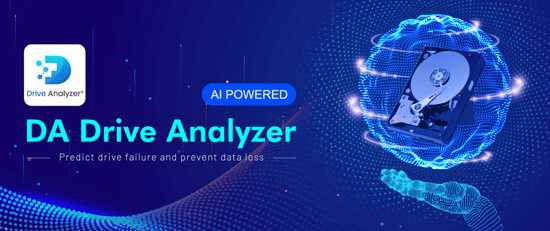AI Updated Ulink DA Drive Analyzer Mechanism with Light Gradient-Boosting Machine for Enhanced Drive Failure Forecasting
AI will support drive failure predictions for SATA, NVMe and SCSI drives, basic algorithm underlying this upgrade called LightGBM.
This is a Press Release edited by StorageNewsletter.com on September 21, 2023 at 2:01 pmThe Ulink Technology‘s DA Drive Analyzer’s drive failure prediction mechanism is about to get an upgrade. Predictions will soon be made the day following receipt of the data.
The new AI will support drive failure predictions for SATA, NVMe, and SCSI drives. It will also consume a host of new predictors without sacrificing speed. The basic algorithm underlying this upgrade is called Light Gradient-Boosting Machine or LightGBM.
How does LightGBM work?
It is a ML framework commonly used for ranking, and classification. Its advantages like speed, accuracy, low memory usage, and ability to handle large-scale data make it for use in DA Drive Analyzer.
It is an open-source distributed gradient-boosting framework based on decision tree algorithms. Before creating the trees, it creates histograms with the data, which groups values into bins to yield great advantages on both efficiency and memory consumption. The histograms help the model to identify optimal split points for each leaf. It then grows trees leaf-wise, choosing the leaf it believes will yield the largest decrease in loss. And when the trees are grown, the prediction of each tree is weighted and then summed up to get a final prediction.
The LightGBM algorithm also utilizes 2 techniques called Gradient-Based One-Side Sampling (GOSS) which helps when training with class-imbalanced data (which is the case for drive failures) and Exclusive Feature Bundling (EFB) which helps the model to train with less memory.
Gradient-Based One-Side Sampling (GOSS)
It is a method that calculates the loss gradient for each data record and then orders the records by the loss gradients. The records with the largest loss gradients are all retained. On the other hand, the records with smaller loss gradients are randomly downsampled. This helps the model to learn more from the records that it has previously performed poorly on. This leads to better learning of the imbalanced data.
Exclusive Feature Bundling (EFB)
It is a way to reduce the number of features (i.e., predictors) that the model has to consider. The way this works is if the model notices that 2 or more features are mutually exclusive, such as a column for whether a drive is an HDD or SSD, and another column for whether the drive disk rotation speed is high or low, it can summarize the information in both the columns into a single column. This feature reduction process makes it faster for the model to work with a number of features.
Key benefits of LightGBM
The LightGBM algorithm boasts a range of advantages that make it a choice for various ML tasks.
Here’s a breakdown of its key benefits:
- Higher speed and accuracy: It is designed with efficiency in mind. Its leaf-wise tree growth strategy accelerates the training process. This swift approach to building decision trees allows LightGBM to process data faster than many other gradient boosting algorithms. Despite its speed, LightGBM maintains a high level of accuracy, ensuring reliable and precise predictions.
- Lower memory usage: Its histogram-based learning approach enables it to convert continuous feature values into discrete bins. This methodology reduces memory consumption during training and inference compared to other algorithms. The smaller memory footprint makes it more accessible for deployment on resource-constrained devices or in environments with limited memory capacity.
- Parallel and distributed GPU learning: It supports parallel computing and GPU acceleration, enabling the algorithm to leverage the power of multiple processors or graphics processing units. This parallelization accelerates both training and prediction, making LightGBM suitable for handling large datasets and complex models.
- Handling large-scale data: It is particularly adept at handling large-scale datasets. Its leaf-wise tree growth strategy and efficient histogram-based approach ensure that the algorithm scales well to substantial volumes of data without sacrificing performance or accuracy. This scalability is crucial for applications dealing with massive datasets.
Resource :
Try out our new model soon
Blog :How ULINK DA Drive Analyzer Can Prevent Downtime













 Subscribe to our free daily newsletter
Subscribe to our free daily newsletter
